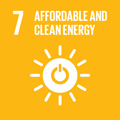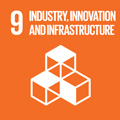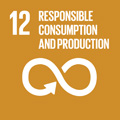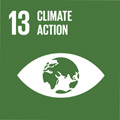- Docente: Giacomo Antonioni
- Credits: 6
- Language: Italian
- Moduli: Giacomo Antonioni (Modulo 1) Serena Bandini (Modulo 2) Dario Frascari (Modulo 3) Giordano Emrys Scarponi (Modulo 4) Alessandro Dal Pozzo (Modulo 5)
- Teaching Mode: In-person learning (entirely or partially) (Modulo 1); In-person learning (entirely or partially) (Modulo 2); In-person learning (entirely or partially) (Modulo 3); In-person learning (entirely or partially) (Modulo 4); In-person learning (entirely or partially) (Modulo 5)
- Campus: Bologna
- Corso: Second cycle degree programme (LM) in Environmental Engineering (cod. 8894)
-
from Feb 20, 2025 to Jun 12, 2025
-
from Feb 20, 2025 to Jun 12, 2025
-
from Feb 20, 2025 to Jun 12, 2025
-
from Feb 20, 2025 to Jun 12, 2025
-
from Feb 20, 2025 to Jun 12, 2025
Learning outcomes
During the course, students will develop a project related to the topics covered in the previous courses of the elective group "ENVIRONMENTAL TECHNIQUES AND TECHNOLOGIES".
Course contents
Students will be able to select a project (to be carried out in groups) to explore some aspects already seen in the following courses:
- INDUSTRIAL ECOLOGY AND SUSTAINABLE DEVELOPMENT M
- ENVIRONMENTAL IMPACT ASSESSMENT OF WASTE TREATMENT ND PRODUCTION AND PLANTS M
- MEMBRANE SEPARATION PROCESSES M
- OCCUPATIONAL SAFETY AND INDUSTRIAL HYGIENE M
- TECHNOLOGIES FOR ENVIRONMENTAL PROTECTION M
The project will be tutored and evaluated by one of the teachers of the "Environmental Techniques and Technologies" elective group.
A more detailed, although general, description of some projects is given below:
-
Life cycle assessment (LCA) of industrial emission control technologies. Students are asked to identify the best technology from a life cycle perspective among several process alternatives. The activity includes: a) defining one or more case studies, based on real plant documentation provided by the instructor, b) modelling the flue gas treatment process to derive material and energy balances, c) conducting a comparative LCA, d) performing a sensitivity analysis of the results.
- Critical analysis, with possible re-elaborations/additions on some specific aspects, of the contents of an Environmental Impact Study available to the public. Students will have to find and analyze the documentation related to an Environmental Impact Study with particular reference to the analysis of emissions into the atmosphere and water discharges and their contribution to the quality of potentially impacted environmental compartments
- Basic sizing of membrane systems for water purification or for the treatment of industrial wastewater. Students will be able to use simulators for the design of the membrane unit and will have to find specific data and information about the quality of the streams to be treated and evaluate the type of pre-treatments and post-treatments required. The project must be accompanied by a preliminary economic evaluation.
- Simulation of a fire in a closed environment using lumped and distributed parameter models. Students will have to find in the literature the heat release curves and other input data for the simulations. Furthermore, they will have to critically discuss the results, highlighting the strengths and weaknesses of the lumped and distributed parameter approaches.
- Design of a wastewater purifier
The activity includes: a) the analysis of a real set of characterization data of a wastewater, in order to obtain the average and maximum incoming values of flow rate and concentration of the different substances; b) the preliminary design of the main process equipment, including both the water line and the sludge line; c) the preliminary sizing of mixer in the equipment that requires it; d) the evaluation of reagent and energy consumption associated with the different devices.
Teaching methods
Carrying out a group project with intermediate meetings with the teachers to verify and direct the progress of the work.
Assessment methods
Submission of a report containing the description of the work done and the results obtained
Power Point presentation of a meaningful summary of the report presented by all members of the group to others teachers of the course
Office hours
See the website of Giacomo Antonioni
See the website of Serena Bandini
See the website of Dario Frascari
See the website of Giordano Emrys Scarponi
See the website of Alessandro Dal Pozzo
SDGs




This teaching activity contributes to the achievement of the Sustainable Development Goals of the UN 2030 Agenda.
